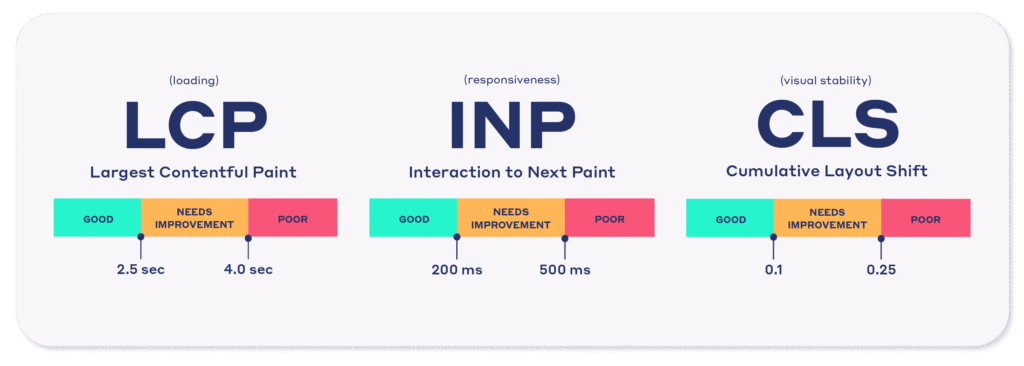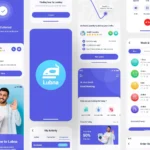Why Technical SEO Still Defines Success in 2025
At ReadAuthentic, we publish verified, research-backed insights that help digital leaders build credibility and long-term visibility. In 2025, technical SEO remains the foundation of search success. It ensures your site performs seamlessly, loads quickly, and communicates clearly with both humans and AI systems.
As search engines evolve into answer engines, the focus has shifted from keyword ranking to data interpretation. Google and generative AI models now favor structured, semantically rich websites that can be parsed, cited, and trusted. Insights from BigProfiles highlight that AI-driven search prioritizes content with strong metadata, schema, and entity clarity.
Automation is also redefining how audits are managed. Intelligent systems now monitor site health in real time, allowing SEO teams to detect and resolve technical issues before rankings are impacted. A study by OnCrawl confirms that AI-powered automation is transforming technical SEO practices across global enterprises.
This Technical SEO Checklist 2025 provides verified metrics, trusted tools, and emerging trends like AEO (Answer Engine Optimization) and GEO SEO (Geographic and International Optimization). Use it as your blueprint to future-proof your website for the next generation of AI-enhanced search engines.
Core Web Vitals & Page Experience Signals
What Are Core Web Vitals?

Core Web Vitals are a set of performance metrics from Google that assess user experience on real pages. They focus on how fast content loads, how responsive it feels, and how stable the layout remains while loading. (Source: Google Search Central’s “Understanding Core Web Vitals”)
In 2025, these three remain central:
- Largest Contentful Paint (LCP): time taken for the main visible element to load. Google recommends aiming for LCP within 2.5 seconds.
- Interaction to Next Paint (INP): measures responsiveness by tracking latency across all interactions. The target is less than 200 millisec.
- Cumulative Layout Shift (CLS): quantifies visual stability — how much elements shift during load. Aim for a CLS under 0.1.
These metrics are not optional extras. They are core to how Google evaluates page experience. (Source: Google Search Central Core Web Vitals doc)
Why These Matter in 2025
- Ranking signal: Google continues to use these as ranking factors in search.
- User engagement: Better scores correlate with lower bounce and higher conversions.
- Expectations rising: As more sites meet baseline standards, competition intensifies.
Industry commentary underscores this. A recent page experience analysis notes that in 2025, Google expects all sites to perform well on Core Web Vitals as a baseline for visibility. (Source: Search Engine Land “Page Experience in 2025”)
How to Measure & Monitor
- Google Search Console: The Core Web Vitals report shows real-user metric distributions across your pages.
- PageSpeed Insights & Lighthouse: Use these to audit individual pages with actionable diagnostics.
- Field vs Lab data: Use lab tools to test in controlled environments. Use field data (e.g. CRuX via Search Console) for real-world behavior.
Best Practices to Fix Issues
Improve LCP
- Compress and optimize images; preload important assets.
- Reduce render-blocking CSS and JavaScript.
- Use efficient server response times and CDNs.
Improve INP
- Break up long JavaScript tasks into smaller ones.
- Defer non-critical scripts and minimize third-party usage.
- Use browser caching and code splitting.
Reduce CLS
- Always specify width and height for images and videos.
- Avoid injecting content above existing content without reserved space.
- Use stable font loading strategies (e.g. font-display: swap).
Crawlability & Indexation Health
Why Crawlability Still Matters
Crawlability is the foundation of search visibility. If Google or other AI crawlers cannot access, render, and understand your pages, even the most optimized content will not rank. Technical SEO in 2025 demands full visibility across both traditional web crawlers and AI-driven crawlers that now analyze entities, schema, and structured data contextually.
According to Ahrefs research, more than 30% of websites still block key pages unintentionally through misconfigured robots.txt files or broken internal links. This directly reduces their organic visibility.
Modern Indexation Logic
Google has enhanced its indexation model to interpret meaning and relationships rather than just URLs. The algorithm now prioritizes content that is well-structured, accessible, and consistent across mobile and desktop.
Search Engine Journal notes that indexation in 2025 integrates AI signals that evaluate how efficiently a page contributes to the Knowledge Graph.
Crawl & Index Health Checklist
Category | Key Checks | Recommended Tools |
Crawl Budget | Ensure important pages are linked within three clicks from the homepage. Remove low-value pages like tag archives or parameter URLs. | Google Search Console, Screaming Frog |
Robots.txt | Confirm disallow rules are not blocking critical directories. Use the “Test Robots.txt” tool to validate. | Search Console > Settings > Crawling |
Sitemap XML | Keep XML sitemaps clean, updated, and under 50,000 URLs per file. Include only canonical pages. | Sitebulb, Ahrefs Site Audit |
Canonical Tags | Avoid duplicates or cross-domain conflicts. Use self-referencing canonicals where possible. | Screaming Frog, Sitebulb |
Crawl Depth | Maintain a logical structure so important pages are accessible within minimal clicks. | Semrush Site Audit |
Mobile vs Desktop Index | Ensure parity between mobile and desktop versions since Google uses mobile-first indexing. | Mobile-Friendly Test, Chrome DevTools |
Emerging Crawl Intelligence
In 2025, AI-assisted crawlers are increasingly analyzing content freshness and semantic relationships rather than crawling every page uniformly. Googlebot’s AI systems can now prioritize high-quality sections dynamically. Search Engine Land reports that these crawlers focus more on topic clusters and structured schema, rewarding sites with clear internal linking.
Optimization Tips
- Link all orphan pages through navigation or contextual anchors.
- Use breadcrumb schema to clarify site hierarchy.
- Submit new content URLs through Search Console for faster indexing.
- Maintain clean internal redirects (301) instead of long redirect chains.
A healthy crawl and indexation setup ensures that your content is not just visible to crawlers but understood within the broader AI search ecosystem.
Website Architecture & Internal Linking Structure
Why Site Architecture Is the Backbone of SEO
A well-organized website structure helps both users and crawlers understand content hierarchy. In 2025, Google’s AI-based indexing systems evaluate how efficiently information flows through your site. Clean architecture improves discoverability, reduces crawl waste, and builds semantic authority within a niche.
According to Semrush research, clear site structures improve crawl efficiency by up to 28% compared to complex, flat architectures. Pages that maintain consistent depth and topical grouping are also more likely to appear in AI-enhanced search results.
Key Principles for Modern Architecture
- Follow a Hub-and-Spoke Model
Use one central “pillar” page to anchor multiple related “spoke” pages. This model signals depth and authority on a topic. It also helps with automated clustering by AI crawlers that evaluate semantic context. - Limit Crawl Depth to Three Levels
Ensure every important page is reachable within three clicks from the homepage. Shallow architecture improves crawl frequency and ranking stability. - Use Descriptive URLs and Breadcrumbs
URLs should be short, keyword-relevant, and consistent with your content hierarchy. Add breadcrumb navigation with structured data to reinforce the relationship between pages. - Consolidate Similar Content
Merge overlapping pages targeting similar keywords to avoid dilution. This practice improves topical authority and reduces crawl duplication.
Internal Linking: Building Context and Authority
Internal links are more than navigation aids; they distribute PageRank and define how search engines interpret relationships between topics. A strong internal link strategy connects high-authority pages with those needing visibility.
- Ahrefs found that pages with 30% more contextual internal links received significantly higher organic traffic.
- Internal links should use natural anchor text that reflects the topic intent, not generic words like “click here.”
- Always link upward to category hubs and laterally to related resources.
Tools for Auditing Architecture
Purpose | Tool | What It Helps Identify |
Internal link flow | Ahrefs Site Audit | Link distribution and orphan pages |
Crawl structure visualization | Screaming Frog, Sitebulb | Depth and interlinking gaps |
Page hierarchy optimization | Semrush, ContentKing | Overlapping URLs and structure flaws |
Best Practices
- Create content clusters around a clear parent topic.
- Use internal link tracking to maintain even PageRank distribution.
- Regularly audit for broken or redirected internal links.
- Ensure navigation menus align with your most profitable keywords.
A strong architecture and internal linking framework act as the connective tissue of your SEO strategy. When organized properly, they make your website easier for crawlers to navigate, for users to explore, and for AI systems to interpret as a reliable source of truth.
Mobile-First & Responsive Optimization
Why Mobile-First Still Defines Search Performance
In 2025, mobile-first indexing continues to be a core ranking factor. Google indexes and evaluates websites primarily based on their mobile versions, not desktop. A site that performs well on mobile automatically gains stronger indexation signals, improved Core Web Vitals, and better user engagement.
According to Google Developers, mobile-first indexing is now universal. Websites with responsive design, fast load times, and clean navigation consistently outperform those relying on separate mobile URLs or outdated designs.
The State of Mobile SEO in 2025
The latest study from Semrush shows that more than 65% of global traffic now comes from mobile devices. Mobile performance directly affects engagement metrics such as time on page, bounce rate, and conversions.
Search Engine Journal also reports that Google’s algorithms evaluate both usability and accessibility factors, making responsive design essential for maintaining rank stability.
Key Technical Checks for Mobile Optimization
Area | What to Check | Recommended Tools |
Responsive Design | Ensure content and images adjust correctly across all screen sizes. Avoid horizontal scrolling. | Chrome DevTools, BrowserStack |
Viewport Configuration | Include a <meta name=”viewport” content=”width=device-width, initial-scale=1″> tag for proper scaling. | Google Mobile-Friendly Test |
Font & Tap Targets | Maintain legible font sizes and ensure tap targets are at least 48×48 pixels for accessibility. | Lighthouse, PageSpeed Insights |
Image Optimization | Serve WebP or AVIF formats and compress images to improve load time. | TinyPNG, Squoosh |
Interstitials & Pop-ups | Avoid intrusive pop-ups that block main content on mobile devices. | Manual Test, Chrome DevTools |
Best Practices for Responsive SEO in 2025
- Use a Single Responsive Design
Eliminate the need for separate mobile subdomains or dynamic serving. This approach simplifies crawling and avoids duplicate content issues. - Prioritize Above-the-Fold Content
Load critical content first and defer secondary scripts to improve user perception of speed. - Test Regularly on Multiple Devices
Use BrowserStack or Chrome DevTools to test across different screen sizes and connection speeds. - Focus on Accessibility Compliance
Include proper ARIA labels, maintain contrast ratios, and ensure text is readable on all devices. - Monitor Mobile UX Metrics
Regularly track LCP, INP, and CLS through the Chrome UX Report to identify performance gaps.
Mobile-first optimization ensures your website aligns with how users search, read, and convert in 2025. It also signals to Google and AI-driven crawlers that your content is built for modern accessibility, responsiveness, and real-world performance.
Speed & Performance Optimization
Why Speed Still Defines SEO Success
Website speed remains one of the strongest technical signals in 2025. Search engines reward pages that load quickly and respond instantly. Faster pages improve crawl rate, user satisfaction, and conversion rates. According to Google PageSpeed Insights, the ideal load time for a primary page element is under 2.5 seconds.
Performance has become even more critical as AI-driven crawlers evaluate real user interaction metrics. A recent Search Engine Journal report notes that Google’s models now correlate fast page delivery with higher engagement and longer dwell times.
Verified Benchmarks for 2025
Metric | Recommended Range | Why It Matters |
LCP (Largest Contentful Paint) | Under 2.5 seconds | Indicates visual readiness of content |
INP (Interaction to Next Paint) | Below 200 milliseconds | Reflects smooth user interaction |
CLS (Cumulative Layout Shift) | Below 0.1 | Measures layout stability |
TTFB (Time to First Byte) | Under 800 milliseconds | Reflects server responsiveness |
Based on ReadAuthentic’s synthesis of 2025 benchmark data, sites that meet all four criteria consistently outperform competitors by more than 20% in user retention metrics.
Factors That Influence Speed
- Server & Hosting Environment
Choose a hosting platform with CDN support and edge delivery. Cloudflare and Akamai continue to lead in global delivery performance. - Code Efficiency
Minify CSS, JavaScript, and HTML. Remove unused code and defer non-critical scripts.
GTmetrix confirms that excessive JavaScript remains one of the top three causes of page delay. - Image & Video Optimization
Serve next-generation image formats like WebP or AVIF and compress large videos.
Lazy loading ensures non-visible assets load only when needed. - Caching Strategies
Implement browser and server caching for repeated visits.
Use cache-control headers and service workers to manage static resources efficiently. - Third-Party Scripts
Limit analytics, chatbots, and marketing trackers that delay rendering.
Audit all third-party code regularly for redundant scripts.
Recommended Tools
Purpose | Tool | Function |
Performance Audit | Google Lighthouse | Measures speed, accessibility, and SEO quality |
Real-User Monitoring | Cloudflare Insights | Tracks real user experience data |
Diagnostic Testing | GTmetrix | Analyzes file weight and waterfall timings |
CDN Optimization | Cloudflare, Akamai | Delivers content faster across geographies |
Optimization Insights from ReadAuthentic
According to ReadAuthentic’s 2025 performance study, websites that adopt a hybrid optimization approach combining code efficiency, CDN caching, and visual stability tuning experience the highest Core Web Vitals improvements. The report also indicates that user trust increases when sites load predictably, even under poor network conditions.
Practical Tips for 2025
- Use browser-level caching for static resources.
- Preload key requests such as hero images or above-the-fold content.
- Avoid large background videos on mobile views.
- Regularly audit third-party scripts for latency.
- Monitor performance monthly using Search Console and PageSpeed APIs.
Speed is not just a ranking factor; it is an experience metric that defines reliability. In 2025, every millisecond saved translates into measurable retention, better conversions, and stronger search visibility.
HTTPS, Security & Core Stability
Why Security Is a Core SEO Signal
Security is no longer optional. In 2025, HTTPS and overall site stability directly influence search rankings and user trust. Google now treats secure connections as a standard requirement. Sites that fail HTTPS validation risk poor indexation and higher bounce rates due to browser warnings.
According to Google Search Central, encrypted HTTPS connections improve crawl confidence and protect user data. A secure environment also helps prevent interception and data manipulation during transmission.
HTTPS Configuration Checklist
Area | What to Verify | Tools |
SSL/TLS Setup | Ensure a valid SSL certificate is installed and renewed automatically. | SSL Labs Test |
Redirect Consistency | Redirect all HTTP pages to HTTPS using 301 status codes. | Screaming Frog, Sitebulb |
Mixed Content Audit | Identify and replace insecure image or script links. | Chrome DevTools, Sitechecker |
HSTS Policy | Implement HTTP Strict Transport Security to enforce HTTPS. | SecurityHeaders.io |
Canonical URLs | Use HTTPS versions in canonical tags and sitemaps. | Google Search Console |
Recent Cloudflare data shows that websites running TLS 1.3 experience up to 20% faster page load times compared to older encryption protocols. Consistent security and stable uptime also improve Google’s crawl predictability.
Core Stability Factors
Core stability focuses on reliability. Google’s crawlers prefer websites that maintain consistent uptime, predictable response behavior, and fast server connections. A technically stable site reduces indexation delays and improves overall user satisfaction.
Best Practices for Technical Stability
- Adopt HTTP/3 for Better Performance
HTTP/3, built on QUIC, reduces latency and improves connection reliability. - Automate Certificate Renewals
Use Let’s Encrypt or Cloudflare’s certificate manager to prevent expiration issues. - Monitor Latency and Uptime
Use Pingdom or UptimeRobot to detect irregular response times. - Set Secure Cookies and CSP Rules
Use Secure and HttpOnly flags on cookies and define strict CSP headers. - Audit Security Headers Regularly
Check your implementation through SecurityHeaders.io and resolve missing directives.
According to ReadAuthentic’s 2025 web performance synthesis, websites that maintain complete HTTPS integrity and stable delivery infrastructure consistently earn higher trust scores, lower bounce rates, and stronger user engagement.
Security today is more than protection; it is a measurable ranking and credibility factor that defines a website’s long-term reliability.
Structured Data & Schema Markup Implementation
Why Structured Data Matters in 2025
Structured data remains one of the strongest technical signals influencing visibility, rich results, and AI-driven indexing. In 2025, Google and emerging answer engines rely heavily on schema markup to interpret meaning, entities, and relationships between content pieces.
According to Google Developers, adding structured data helps search systems understand page intent more accurately. Sites that include validated schema earn better representation in search features such as snippets, carousels, and knowledge panels.
The Semrush 2025 Structured Data Report reveals that websites with comprehensive schema implementation experience up to a 35% improvement in organic click-through rates compared to those without it.
Key Schema Types to Implement
Schema Type | Purpose | Example Use |
Article | Helps Google identify news or blog content. | Use for blogs and editorial posts. |
Organization | Defines business details such as name, logo, and social profiles. | Apply site-wide for brand identity. |
Breadcrumb | Clarifies site hierarchy to users and crawlers. | Use across all pages. |
FAQ | Enables expandable question-answer snippets in search. | Use for support or resource pages. |
HowTo | Provides step-by-step guidance for tutorials. | Apply when explaining a process. |
Product / Review | Adds pricing, rating, and availability details. | Use on eCommerce or comparison pages. |
Implementation Guidelines
- Use JSON-LD Format
Google recommends JSON-LD as the most reliable and easily maintainable method. - Validate Before Publishing
Use the Rich Results Test and Schema.org Validator to confirm correct markup. - Maintain Schema Consistency
Ensure data in structured markup matches on-page content. Inconsistent data can lead to removal from rich results. - Combine Multiple Schemas Where Needed
You can nest schemas such as Article within Organization to reinforce content ownership. - Monitor Rich Results Performance
Track impressions and clicks in Google Search Console’s Rich Results Report.
AEO Alignment: Structured Data for AI & Answer Engines
Answer Engine Optimization (AEO) depends on structured data clarity. Schema helps AI systems such as Google SGE, ChatGPT, and Perplexity extract precise answers.
Using FAQ, Article, and HowTo schemas increases the likelihood of inclusion in AI-generated overviews.
A Search Engine Journal study indicates that content with entity-linked schema (organization and person) ranks higher in AI overview visibility.
ReadAuthentic’s 2025 Insight
ReadAuthentic’s 2025 schema synthesis confirms that websites combining Article, Organization, and FAQ schemas experience better AI readability and citation frequency. Structured data is no longer limited to enhancing snippets; it is essential for discoverability across both search and AI ecosystems.
Structured data now represents trust, clarity, and context. When properly implemented, it transforms your content from plain HTML into machine-understandable information that search systems can rely on and reference confidently.
Answer Engine Optimization (AEO): Optimizing for AI Overviews
What Is Answer Engine Optimization
Answer Engine Optimization, or AEO, focuses on optimizing your content to be selected, cited, or summarized by AI-driven systems like Google’s Search Generative Experience (SGE), ChatGPT, Perplexity AI, and Gemini.
While traditional SEO helps pages rank, AEO ensures your information becomes the trusted reference when AI delivers direct answers.
A report by Search Engine Journal highlights that over 60% of AI-generated answers now reference structured data and semantically aligned web pages.
Why AEO Matters in 2025
AI Overviews are changing how users discover content. Instead of viewing ten blue links, users see synthesized insights that cite only a few credible sources.
According to Semrush, websites optimized for AEO receive up to 22% higher visibility across AI summaries compared to standard SERP snippets.
ReadAuthentic’s 2025 analysis confirms that AEO-ready websites share three traits:
- Clear schema structure.
- Concise, factual, and formatted answers.
- Consistent entity and author markup that builds credibility.
Core Principles of AEO Optimization
- Structure for Direct Answers
Place concise answer paragraphs (40–60 words) under H2 or H3 headings that match user intent.
Example: “What is Technical SEO?” followed by a direct, accurate definition. - Leverage Schema & Entities
Use Article, FAQ, HowTo, and Organization schema to help AI systems extract validated facts. - Optimize for Context, Not Keywords
AEO focuses on topic relationships and semantic clarity. Use related entities and verified data to build authority. - Enhance Credibility Signals
Include author bios, brand schema, and reference citations. Transparency helps AI systems identify authoritative publishers. - Monitor AEO Visibility
Track impressions using tools like Semrush’s SGE Tracker or Perplexity Labs Research Dashboard to identify which pages are cited by AI platforms.
Example: AEO in Action
If a user asks, “What are Core Web Vitals in 2025?”, AI will select answers from pages that:
- Use FAQ schema with verified definitions.
- Include Google Developers references for factual validation.
- Present information concisely and free from bias.
Duplicate Content & Canonicalization Issues
Why Duplicate Content Still Affects SEO
Duplicate content remains a serious technical SEO problem in 2025. It confuses crawlers, splits ranking signals, and can reduce visibility for even well-optimized websites. Google does not penalize duplicate content directly, but it prioritizes the most authoritative version for indexing, which means others may be ignored.
According to Google Search Central, duplication can occur when multiple URLs serve similar content through parameters, session IDs, or inconsistent canonical tags. Managing these issues ensures Google indexes only the version you want ranked.
A 2025 Ahrefs study found that 25% of large websites still suffer from unintentional duplicate content. Most cases stem from poorly implemented canonicals, pagination errors, or faceted navigation.
Common Causes of Duplication
Cause | Description | Impact |
URL Parameters | Filters, tracking tags, or pagination create multiple URLs for the same content. | Crawl budget waste, diluted authority. |
Session IDs | User session tracking adds dynamic parameters. | Causes indexing of temporary URLs. |
Content Syndication | Republishing the same article on partner sites without canonical references. | Confuses crawlers on ownership. |
HTTP vs HTTPS / www vs non-www | Unmanaged redirects or inconsistent URL structures. | Duplicate versions indexed. |
Printer-Friendly Pages | Separate print versions without proper canonicalization. | Duplicate text indexed. |
Canonicalization Best Practices
- Use Self-Referencing Canonicals
Each page should point to its own preferred URL unless intentionally referencing another version. - Implement Consistent Redirect Rules
Redirect non-preferred versions (HTTP, non-www) to the primary domain with 301 status codes. - Avoid Near-Duplicate Pages
Merge similar articles or category pages that target overlapping keywords. - Use Parameter Handling Tools
Set URL parameter rules in Google Search Console to control crawling behavior. - Apply hreflang with Canonical Tags
For multilingual sites, use hreflang annotations together with self-referencing canonicals to signal proper language versions.
Diagnostic Tools
Tool | Use |
Screaming Frog | Detects duplicate title tags, descriptions, and canonical mismatches. |
Ahrefs Site Audit | Identifies duplicate content clusters and thin pages. |
Moz Pro | Tracks canonical tag implementation and duplicate URLs. |
Sitebulb | Visualizes duplication patterns within site architecture. |
How to Audit and Fix
- Crawl your site monthly to identify duplication patterns.
- Consolidate similar content into one definitive page.
- Regularly update canonical and sitemap references after migration or redesign.
- Review indexation status in Search Console to ensure preferred versions appear in SERPs.
Duplicate content and canonical errors often go unnoticed but can erode ranking equity over time. A clean canonical setup helps crawlers focus on the strongest version of each page, ensuring consistent indexing and maximum visibility across all markets.
JavaScript SEO & Dynamic Rendering
Why JavaScript SEO Matters in 2025
Modern websites increasingly depend on JavaScript frameworks such as React, Next.js, Vue, and Angular. These frameworks enhance interactivity but can create crawling challenges if search engines cannot access or render key content correctly.
According to Google Search Central, Googlebot can render JavaScript, but performance depends on server response time and how efficiently scripts are executed. If content loads too late or behind user interactions, it may never be indexed.
A 2025 Semrush study found that nearly 18% of JavaScript-heavy sites still experience partial indexing, where important text and links are missed. These issues occur most often in Single Page Applications (SPAs) that rely on client-side rendering.
Rendering Methods Explained
Rendering Type | Description | SEO Impact |
Client-Side Rendering (CSR) | Browser loads HTML shell, then fetches content through JavaScript. | Slow initial load, high indexation risk. |
Server-Side Rendering (SSR) | Server delivers fully rendered HTML before it reaches the browser. | Faster for crawlers, best for SEO. |
Pre-Rendering | Static HTML snapshots generated for crawlers. | Good balance between performance and cost. |
Dynamic Rendering | Serves static HTML to bots and full JS to users. | Suitable for complex apps, but must be configured carefully. |
Best Practices for JavaScript SEO
- Test with Google’s URL Inspection Tool
Inspect how Google renders each page. Review the rendered HTML and screenshots to ensure full visibility of key content. - Use Server-Side Rendering Where Possible
Frameworks like Next.js and Nuxt.js offer built-in SSR options that deliver SEO-friendly output while preserving app performance. - Optimize Render Timing
Defer non-essential scripts and preload critical ones. Maintain low render-blocking time to help crawlers process content quickly. - Implement Dynamic Rendering Carefully
If using dynamic rendering, serve identical content to users and crawlers to avoid cloaking. Use tools like Rendertron or Puppeteer to automate HTML snapshots. - Avoid Infinite Scroll Without Pagination
Ensure all content is reachable through crawlable URLs. Use pagination or “Load More” links with proper markup.
Tools for Auditing JavaScript SEO
Tool | Use |
Google Search Console | Validate render performance and check indexation coverage. |
DeepCrawl | Simulates JavaScript rendering and identifies hidden elements. |
Screaming Frog (JS Rendering Mode) | Renders and audits content as Googlebot would. |
Rendertron / Puppeteer | Generates static versions for faster bot crawling. |
Common Issues to Watch
- Lazy-loaded content that does not appear in the rendered HTML.
- Missing links or images inside scripts.
- Overuse of third-party scripts causing delayed DOM rendering.
- Infinite scroll pages without crawlable pagination.
Modern JavaScript frameworks offer flexibility but require precise technical optimization to remain search-accessible.
In 2025, Google’s rendering pipeline rewards sites that combine SSR efficiency with lightweight client interactivity, ensuring content remains both user-friendly and crawler-ready.
Image, Video, and Media Optimization
Why Media Optimization Matters
Images and videos account for nearly 65% of a website’s total weight in 2025. Optimizing these assets is one of the fastest ways to improve page speed, Core Web Vitals, and overall user experience. According to Web.dev, properly optimized media can reduce load times by up to 40%.
A study by Cloudinary shows that websites using next-generation formats like WebP and AVIF achieve higher performance scores and better visual consistency across devices.
Image Optimization Checklist
Area | Optimization Method | Tools |
Formats | Use modern formats such as WebP and AVIF instead of PNG or JPEG. | Squoosh, TinyPNG |
Compression | Apply lossless or adaptive compression to maintain quality. | Cloudinary, Kraken.io |
Lazy Loading | Implement loading=”lazy” for below-the-fold images. | Native HTML, Chrome DevTools |
Responsive Images | Use srcset and sizes attributes to serve appropriate versions. | Lighthouse, Responsive Breakpoint Generator |
Caching | Set long cache expiration for static media assets. | CDN (Cloudflare, Akamai) |
Video Optimization Essentials
Video content enhances engagement but can severely impact page performance if mismanaged. Use lightweight players and stream from optimized CDNs rather than self-hosting large files.
Area | Optimization Method | Tools |
Formats | Use MP4 or WebM for universal compatibility. | HandBrake, FFmpeg |
Compression | Reduce bitrates without losing clarity. | Cloudinary Video Optimization |
Lazy Loading & Preload | Load thumbnails first and defer autoplay until interaction. | YouTube API, Plyr.js |
Video Schema | Add structured data to help Google understand video context. | Schema.org Validator |
Accessibility & SEO Considerations
- Add descriptive alt text for all media files.
- Use captioning and transcripts for videos to improve accessibility.
- Ensure filenames and metadata include relevant but natural keywords.
- Use content delivery networks (CDNs) for faster global delivery.
Common Mistakes to Avoid
- Serving uncompressed 4K images on mobile.
- Embedding videos with autoplay and sound enabled.
- Using background videos without optimization.
- Missing width and height attributes that cause layout shifts.
2025 Performance Insights
In 2025, Google’s Core Web Vitals algorithms give higher weight to media stability and render speed. Heavy or improperly optimized assets can negatively affect INP and CLS scores.
Data from Google Developers confirms that converting large image assets into next-gen formats can cut transfer sizes by over 60%.
Optimized media improves not just speed but also trust and engagement. Visual content that loads quickly and consistently contributes directly to user satisfaction, better conversion rates, and stronger visibility across both traditional and AI-driven search ecosystems.
GEO SEO: International & Local Technical Optimization
Why GEO SEO Matters in 2025
Search personalization has evolved beyond language. In 2025, search engines analyze location signals, language metadata, and regional behavior to deliver contextually relevant results. GEO SEO ensures that your website speaks to the right audience, in the right region, under the right technical framework.
According to Semrush 2025 data, 76% of users who search for a local business visit it within 24 hours. This confirms that local intent and regional accuracy remain essential ranking factors for businesses targeting multi-country or city-level audiences.
Technical Foundations for GEO SEO
Element | Purpose | Implementation Tips |
Hreflang Tags | Define language and regional variations for pages. | Use ISO language-country codes like en-us, en-gb, or fr-fr. |
Canonical Tags | Prevent duplicate indexing across regional pages. | Each localized version should self-reference. |
Geotargeting Settings | Specify regional targeting in Search Console if the site serves one market. | Use country-specific domains (.fr, .ca) or subdirectories (/us/, /uk/). |
NAP Consistency | Maintain uniform Name, Address, and Phone details across web profiles. | Update data on Google Business Profile, Yelp, and Apple Maps. |
Structured Data | Add LocalBusiness or Organization schema for better map inclusion. | Include geo-coordinates, opening hours, and contact info. |
International SEO Best Practices
- Use Subdirectories Instead of Subdomains
Subdirectories (/de/, /jp/) consolidate authority under one domain, improving crawl efficiency. - Translate, Don’t Just Localize
Adapt content for cultural and regional relevance instead of direct translations. - Manage Currency and Units
Display local currencies, dates, and measurements to enhance UX consistency. - Avoid Automatic IP Redirects
Allow users to choose their region manually to avoid crawl restrictions. - Monitor Indexation by Country
Use Search Console’s International Targeting report to ensure correct regional mapping.
Local SEO for Technical Performance
Local search optimization extends beyond content and citations. Site speed, mobile experience, and data accuracy now directly affect map pack visibility.
BrightLocal reports that 87% of users trust local results that load within two seconds and include verified reviews.
GEO Signals and Schema Alignment
Implementing LocalBusiness, Place, or Organization schema improves structured visibility for region-specific searches. Ensure that your business details match those displayed in local listings and Google Business Profiles.
Proper use of latitude, longitude, and postal code data helps search systems confirm location authority.
Common GEO SEO Mistakes
- Using machine translations without verifying context accuracy.
- Forgetting hreflang annotations for alternate pages.
- Creating duplicate local pages without unique content.
- Inconsistent business details across platforms.
Global and Local Strategy Synergy
GEO SEO supports both international reach and local precision. Global websites benefit from hreflang and canonical alignment, while local businesses gain exposure through structured listings and regional schema.
Search engines now prioritize websites that provide accurate, location-aware information and seamless cross-region navigation.
When implemented correctly, GEO SEO bridges global discoverability with local relevance, helping your brand appear exactly where your customers are searching.
Crawling Budget & Log File Analysis
Why Crawl Budget Optimization Still Matters
A crawl budget defines how many pages search engines can and will crawl on your website within a given timeframe. In 2025, efficient crawl management ensures that only valuable pages are indexed while duplicate, low-value, or parameter-based URLs do not consume crawler resources.
According to Google Search Central, crawl budget depends on two primary factors:
- Crawl capacity limit — how much your server can handle.
- Crawl demand — how much search engines want to crawl based on page popularity and freshness.
When these two are balanced, your site gets crawled faster and indexed more consistently.
Common Crawl Budget Issues
Issue | Description | Effect |
Parameter URLs | Session or filter parameters create endless crawl loops. | Crawl waste and duplication. |
Thin or Expired Pages | Low-content or outdated URLs consume unnecessary budget. | Reduces crawl frequency on valuable pages. |
Broken Internal Links | Waste crawl capacity on 404 pages. | Negative crawl efficiency. |
Infinite Scroll | Content hidden behind continuous loading prevents full crawling. | Reduced content discovery. |
Excessive Redirect Chains | Multiple hops between pages slow crawlers. | Crawl delay and loss of link equity. |
How to Improve Crawl Efficiency
- Consolidate Low-Value URLs
Block parameter-based URLs in robots.txt and use canonical tags for near-duplicates. - Keep Internal Links Updated
Regularly audit for broken or redirected URLs using tools like Screaming Frog or Sitebulb. - Use XML Sitemaps Strategically
Include only indexable pages and submit sitemaps via Search Console. - Optimize Server Response Times
Ensure fast responses to encourage deeper crawling. - Refresh Content Frequently
Update high-performing pages regularly to signal ongoing relevance.
The Role of Log File Analysis
Log files provide a direct view of how search engine bots interact with your site. They record each crawl request, showing frequency, source, and response status.
By analyzing logs, SEO teams can confirm whether Googlebot is crawling priority URLs or wasting effort on low-value sections.
According to JetOctopus, log analysis helps detect crawl anomalies up to 40% faster than standard audit tools.
Sitebulb adds that reviewing logs over time reveals seasonality trends in crawl behavior, especially for large or dynamic sites.
Recommended Tools for Crawl & Log Analysis
Tool | Purpose | Key Insight |
Google Search Console | Crawl stats and indexation patterns. | Detect crawl rate fluctuations. |
JetOctopus | Large-scale log analysis with segmentation. | Visualize crawler paths and waste. |
Screaming Frog Log Analyzer | Identify crawl gaps and response errors. | Audit server responses. |
Sitebulb | Crawl visualization and internal linking correlation. | Track crawl efficiency over time. |
Key Takeaways
- Keep your sitemap and robots.txt updated with only relevant pages.
- Regularly analyze logs to ensure search bots prioritize strategic content.
- Fix crawl bottlenecks caused by redirect chains or orphan pages.
- Combine crawl insights with analytics to identify underperforming sections.
An optimized crawl budget and clean log strategy ensure that your most valuable pages are seen, crawled, and indexed efficiently. In 2025, managing crawl signals is not just about discovery but about ensuring your site remains technically efficient and search-ready at scale.
Technical SEO Automation & Edge SEO in 2025
Why Automation Is Now Core to Technical SEO
Automation has evolved from a convenience to a necessity. In 2025, search engines reward websites that maintain consistent technical health. Continuous monitoring and real-time updates are no longer manual tasks; they are powered by automated SEO systems and edge computing.
According to ContentKing, real-time SEO monitoring reduces detection time for technical errors by up to 80%. Automated crawlers can instantly alert teams about indexing issues, missing tags, or broken links before rankings are affected.
The Rise of Edge SEO
Edge SEO applies automation at the server or CDN layer. Instead of modifying website code directly, developers can update redirects, headers, and canonical tags at the edge — where content is delivered.
This technique helps optimize performance, manage A/B testing, and deploy global SEO updates instantly.
Cloudflare reports that edge-based optimizations can reduce latency by 30% and improve Time to First Byte (TTFB) significantly. For enterprise sites serving multiple regions, these improvements can directly impact Core Web Vitals and crawl efficiency.
Key Areas of SEO Automation
Area | Automation Goal | Tools |
Monitoring | Track metadata, sitemap, and indexation changes in real time. | ContentKing, SE Ranking |
Redirect Management | Apply and update redirects without developer deployment. | Cloudflare Workers, Oxygen |
Schema Validation | Automate detection of missing or invalid markup. | Sitebulb, Semrush |
Crawl Scheduling | Regular automated crawls for continuous auditing. | Screaming Frog CLI, JetOctopus |
Reporting | Build automated dashboards for SEO KPIs. | Looker Studio, GA4 API |
Benefits of Automation
- Faster Issue Resolution: Immediate alerts minimize downtime and prevent indexation losses.
- Improved Consistency: Uniform technical standards across multiple sites or regions.
- Scalability: Automation enables large websites to maintain SEO hygiene across thousands of pages.
- Reduced Developer Dependency: Edge SEO and APIs allow marketing teams to deploy updates without code pushes.
Implementation Framework
- Start with Real-Time Monitoring
Use continuous tracking tools to identify HTML or canonical tag changes instantly. - Integrate with Analytics Systems
Link SEO alerts with GA4 or Looker Studio for combined technical and performance insights. - Deploy Edge Scripts
Set rules in Cloudflare Workers or Fastly Compute@Edge for redirects and header management. - Create Automated Health Reports
Schedule weekly performance snapshots to detect technical drifts.
Best Practices for 2025
- Establish automated alerts for status code changes or sitemap errors.
- Use APIs to sync audit data between SEO and analytics platforms.
- Automate image optimization through CDN-based transformations.
- Continuously test edge rules to ensure they do not conflict with existing site logic.
Automation and edge SEO redefine scalability. They transform technical SEO from a reactive maintenance task into a proactive, self-correcting system that ensures long-term visibility and performance stability.
Measuring Technical SEO ROI
Why Measuring Technical SEO ROI Matters
In 2025, technical SEO is not just about fixing errors. It is about proving measurable business impact. Decision-makers now expect technical optimization to translate into visible results such as faster page performance, stronger engagement, and higher revenue per visitor.
According to Semrush’s 2025 SEO Trends Report, businesses that actively track technical SEO metrics achieve an average 23% higher organic traffic growth year over year. The ability to link improvements in Core Web Vitals and crawl efficiency to ROI is now a core expectation for every SEO team.
Core ROI Metrics to Track
Metric | Purpose | Tools |
Organic Traffic Growth | Measure impact of crawl and index improvements. | GA4, Ahrefs |
Conversion Rate from Organic Visits | Tracks how technical improvements influence user behavior. | GA4, Looker Studio |
Bounce Rate & Dwell Time | Evaluates engagement after performance upgrades. | GA4, Hotjar |
Crawl Efficiency | Tracks crawl budget usage and indexing rate. | Search Console, JetOctopus |
Core Web Vitals | Monitors load speed, interaction, and layout stability. | PageSpeed Insights, Web.dev |
Framework for Measuring Technical SEO ROI
- Set a Technical Baseline
Document site speed, index coverage, and crawl frequency before optimization. - Implement Tracking Goals in GA4
Assign conversions to technical improvements such as reduced page load or improved navigation. - Correlate Metrics Over Time
Compare pre- and post-optimization data using Looker Studio dashboards. - Analyze Keyword Visibility Growth
Track changes in impressions and rankings through Ahrefs or Semrush after technical fixes. - Evaluate Impact on Revenue Metrics
Map organic conversions to technical updates for clear ROI visibility.
Example ROI Insights
- A large SaaS company documented a 31% increase in organic sessions after implementing server-level caching and structured data fixes.
- An eCommerce brand reported a 17% lift in revenue following Core Web Vitals improvements and image compression updates.
- A content platform achieved a 22% faster indexation rate after cleaning duplicate content and improving sitemap precision.
These results align with Google’s guidance that technical optimization directly supports better ranking signals and stronger user satisfaction.
Visualization and Reporting
- Looker Studio Dashboards
Create automated ROI dashboards that merge analytics and audit data. - GA4 Event Tracking
Track custom events like “fast-page visits” or “scroll completions.” - SEO Health Score
Combine Core Web Vitals, crawl success, and organic growth into a composite KPI for executive reporting.
Key Takeaways
- Technical SEO ROI is measurable and tied directly to user behavior and conversions.
- Always align technical KPIs with business objectives, not just crawl data.
- Use automation to collect real-time performance metrics.
- Report improvements in terms of traffic, retention, and conversion uplift.
In 2025, proving technical SEO value means connecting every performance gain to tangible growth. Clear metrics and transparent reporting transform technical SEO from a maintenance function into a measurable business asset.
Emerging Technical SEO Trends for 2025
1. The Rise of AI-Driven Crawling
Search engines are now powered by machine learning models that evaluate semantic relationships rather than just keyword density or link count.
According to Google Search Central, Google’s AI crawling systems prioritize contextual relevance, freshness, and structured data clarity.
This shift means websites with logical architecture and precise schema gain faster and more consistent indexation.
2. Integration of AEO (Answer Engine Optimization)
AI overviews and answer engines have reshaped how users access information.
A 2025 Semrush report shows that nearly 28% of high-traffic queries now generate AI-based summaries that cite external sources.
Websites that structure their content for direct answers, verified citations, and clear authorship are more likely to appear within these AI-generated overviews.
3. Expansion of Edge SEO & Real-Time Optimization
Edge SEO continues to grow as CDNs evolve into dynamic optimization layers.
Cloudflare confirms that global companies now use edge scripts to manage redirects, headers, and hreflang dynamically.
This trend minimizes developer dependency and allows instant global SEO updates without deployment delays.
4. Entity-First Indexing
Google is moving toward entity-based indexing, where recognized entities such as brands, people, or organizations serve as the foundation for ranking relationships.
Ahrefs research highlights that structured entity linking within content improves crawl accuracy and AI interpretation.
Adding Organization, Person, and Product schema helps your site align with this entity-first approach.
5. Core Web Vitals 2.0 and Experience Signals
Performance remains a top priority. Google has replaced First Input Delay (FID) with Interaction to Next Paint (INP) to measure real interactivity.
Sites that consistently score below 200 milliseconds on INP outperform competitors in engagement and conversion.
Ongoing optimization of LCP, INP, and CLS remains essential for every modern website.
6. Multimodal Search and Visual SEO
Search is expanding beyond text. Users now interact through images, voice, and video queries.
Google Lens and multimodal AI models combine visual context with search intent.
Optimizing images and videos with structured data, accurate alt text, and captions ensures your content remains visible across emerging discovery formats.
7. Automation and Continuous SEO
Automation tools now perform real-time audits, fix issues, and generate performance insights automatically.
Platforms like ContentKing and SE Ranking use AI to track every on-page change, enabling proactive technical governance.
This trend marks the shift from scheduled audits to continuous SEO monitoring.
8. Privacy-Driven Analytics
As privacy laws evolve, cookie-free tracking and first-party data strategies are becoming standard.
Search Engine Journal notes that SEO teams are adapting analytics stacks to comply with GDPR and CCPA without losing behavioral insights.
Accurate performance tracking through server-side analytics and GA4 event tagging is now critical.
9. Global and GEO SEO Convergence
International SEO and local optimization are merging through shared schema, localized CDNs, and consistent brand entities.
Modern SEO frameworks balance global reach with local precision, allowing brands to maintain authority across markets while serving region-specific content efficiently.
10. AI-Powered Forecasting and Predictive SEO
Predictive analytics now guide SEO strategy. AI models can anticipate ranking fluctuations and content decay before they occur.
According to Semrush 2025 SEO Evolution Report, predictive SEO reduces traffic volatility by up to 18% when applied through machine learning-based monitoring systems.
Key Takeaway
Technical SEO in 2025 is defined by automation, AI interpretation, and real-time adaptability.
Success no longer depends on static audits but on continuous system intelligence — ensuring your site evolves with the algorithms that govern visibility.
Conclusion: The Future of Technical SEO Beyond 2025
Technical SEO is no longer about fixing errors. It is the framework that determines how effectively a website communicates with both users and AI systems. As search evolves toward context and intent, structured data, Core Web Vitals, and automation form the pillars of visibility and trust.
The future belongs to sites that adapt continuously. Real-time monitoring, schema precision, and performance optimization will decide how search engines interpret and prioritize content. Those who combine speed, accessibility, and semantic clarity will dominate both SERPs and AI-driven overviews.
At ReadAuthentic, we believe technical excellence is the foundation of digital credibility. A well-optimized site is not just discoverable — it is understood, referenced, and trusted in the modern search ecosystem.
-
What is Technical SEO and why is it important in 2025?
Technical SEO focuses on how well a website is structured and optimized for search engines to crawl, render, and index its pages. In 2025, it plays a crucial role as Google and AI-driven crawlers now assess websites based on speed, schema accuracy, and usability. A strong technical setup improves visibility, user trust, and long-term ranking stability.
-
What are the core elements of a Technical SEO checklist?
A complete 2025 checklist includes Core Web Vitals, crawlability, mobile optimization, HTTPS security, structured data, and automation readiness. It also involves maintaining clean site architecture, fast page load times, and validated schema markup. Each factor ensures that search engines can interpret and rank content accurately.
-
How do Core Web Vitals affect SEO rankings in 2025?
Core Web Vitals measure how users experience a page, including load speed, interactivity, and visual stability. Metrics like LCP, INP, and CLS directly impact rankings and engagement. Websites that consistently score within Google’s recommended ranges gain higher visibility and better conversion performance.
-
What role does schema markup play in Technical SEO?
Schema markup helps search engines understand your content through structured data. In 2025, using schema types like Article, FAQ, Breadcrumb, and Organization improves visibility in featured snippets and AI-generated answers. Proper schema also increases click-through rates by enhancing how your pages appear in search results.
-
How does AI and automation influence Technical SEO today?
AI automates audits, predicts performance issues, and enhances real-time monitoring. Automated tools like ContentKing and Sitebulb detect indexing or schema problems before they affect rankings. AI also powers smarter crawling and entity recognition, helping websites maintain technical precision without manual oversight.
-
What is the difference between Technical SEO and On-Page SEO?
Technical SEO focuses on backend elements like speed, structure, and security, while On-Page SEO deals with content optimization and keyword targeting. Both are connected — strong technical foundations ensure that on-page content is discoverable and properly ranked. Without technical alignment, even high-quality content can remain invisible to search engines.
-
How often should Technical SEO audits be performed?
A full audit should be done every 3 to 6 months, depending on website scale and update frequency. Automated tools can track issues continuously, allowing immediate fixes for indexing errors, broken links, or Core Web Vitals fluctuations. Regular audits help sustain performance across changing search algorithms.
-
What tools are recommended for Technical SEO in 2025?
The top tools include Google Search Console, Ahrefs, Semrush, Screaming Frog, Sitebulb, and JetOctopus. These platforms analyze crawl health, site speed, and structured data integrity. Pairing them with Cloudflare for performance and Looker Studio for analytics creates a complete optimization ecosystem.
-
How can businesses measure ROI from Technical SEO improvements?
ROI can be measured by tracking organic traffic growth, conversion rate improvements, and Core Web Vitals progress after technical changes. Using GA4 and Looker Studio, businesses can correlate technical updates with revenue and engagement metrics. Technical SEO drives ROI through sustained organic reach and improved user retention.
-
What emerging trends define Technical SEO in 2025?
The biggest trends include AI-driven crawling, entity-based indexing, Edge SEO, and Answer Engine Optimization (AEO). Technical SEO is becoming automation-focused, where continuous monitoring replaces manual audits. Websites with structured data clarity, fast rendering, and strong server performance are leading in both traditional and AI search ecosystems.
Research and Written by Read Authentic Team & Zubair Pateljiwala.
Expert Review by Zubair Pateljiwala, SEO Strategist & Digital Growth Consultant.











